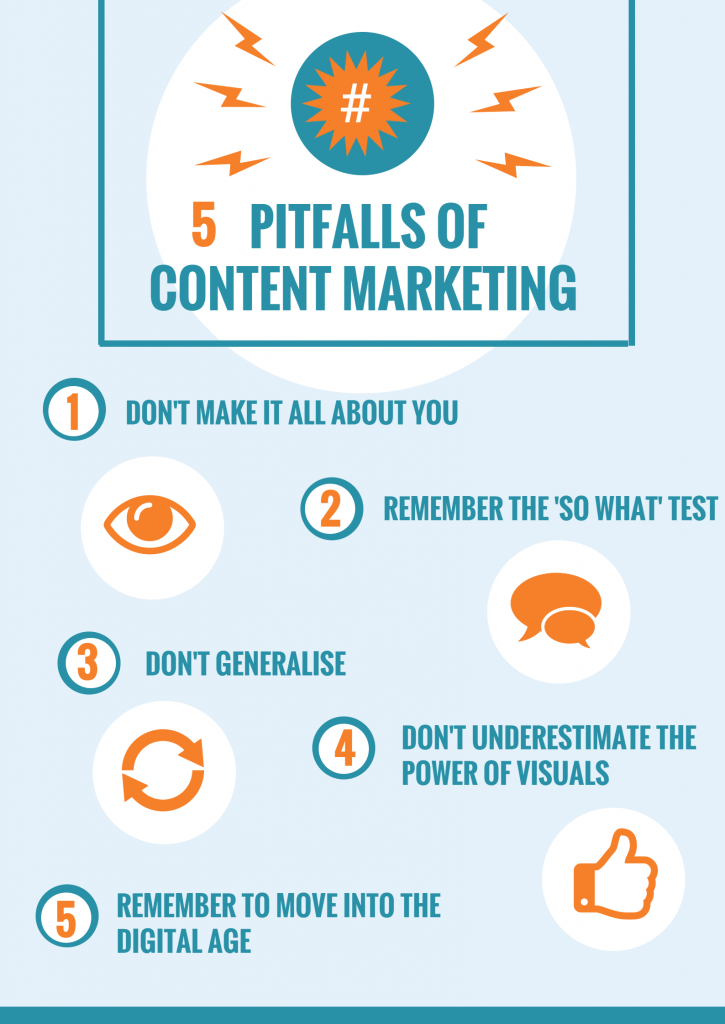Content marketing has become one of the fastest-growing promotional disciplines, but many companies are failing to grab their audiences’ attention. With the amount of competing content rising annually, it is getting harder and harder to stand out. Here we take a look at some of the most common mistakes in content marketing and suggest some better tactics.
Making it all about you. What your company offers is amazing and indispensable – that’s a given. Unfortunately, however, your busy customers are more focused on themselves. Therefore, content marketing needs to focus on what is interesting and helpful to them. Think about the issues your prospects are struggling with today, or – better still – the emerging headaches they have yet to grapple with. For example, if you’re serving corporate or leisure travel agents, can you shed light on the implications of airlines now rolling out IATA’s New Distribution Capability? If you package loyalty schemes for rail operators, can you suggest where the next frontier for ancillary revenues lies? Only once you’ve engaged on an issue your customers really care about should you start bringing the topic around to how you can help.
Failing to pass the ‘So what?’ test. There is no shortage of erudite and worthy content in the world. Unfortunately, your customers don’t have the time to figure out the implications of what you’ve told them. They need to know upfront what’s in it for them – what new knowledge they can start using and gaining from immediately. Therefore, your content needs to have clear and specific recommendations that can be actioned immediately. For example, don’t tell national tourist boards the Zika virus has ‘profound implications’ – tell them what five things they should do today about the outbreak to underpin visitor confidence in their destination.
Speaking in generalisations. One of the surest routes to being forgotten is to use platitudes and generalisations. This habit shows you either don’t know or care about your subject, or were in too much of a hurry to do it any justice. Instead, use specific, real-world examples to illustrate your points. These nuggets anchor what you’ve said in the reader’s mind through relevance or shared memory. They also do a lot to add credibility and ‘bottom’ your arguments. As Alexander Dumas (cryptically) said: “All generalisations are dangerous, even this one.”
Being textual, not visual. Time-poor customers are less likely to ‘deep dive’ into what they receive and prefer to move quickly between items. As a result, long-form articles often fall victim to ‘channel-hopping’, but rapidly digested content can be very effective.
Research shows we remember visual images much easier and better than words. This fact helps explain the rise of the infographics, which can be particularly good at explaining complex ideas. As well as being visually appealing, infographics communicate knowledge efficiently and – in the social media age – lend themselves very well to online sharing. Some good news: there are now various websites available that allow you to build your own infographics cheaply, such as Venngage and Piktochart, putting this powerful tool within every company’s reach and budget.
Staying analogue in the digital age. There is broad consensus that video is the future of content marketing. Internet equipment manufacturer Cisco predicts that consumer internet video traffic will go from 64 percent of global IP traffic in 2014 to more than 80 percent by 2019. Through its combination of sound, vision and dialogue, video can be especially powerful at bringing corporate storytelling to life and creating an emotional bond with the viewer. The medium is therefore rich with possibility for marketing content.
More good news: not only is communications infrastructure making video more deliverable, new production technology is making this content more affordable for even SME businesses. High-quality camcorders are available at very reasonable prices, and even smartphones are becoming used for professional video shoots. Sophisticated video editing software is also now more accessible, so with only a small amount of technical proficiency you can start producing excellent content. Whether you get an agency like 80:20 Communications to produce your video or do it yourself, like RocketRoute, you need to get onboard.










